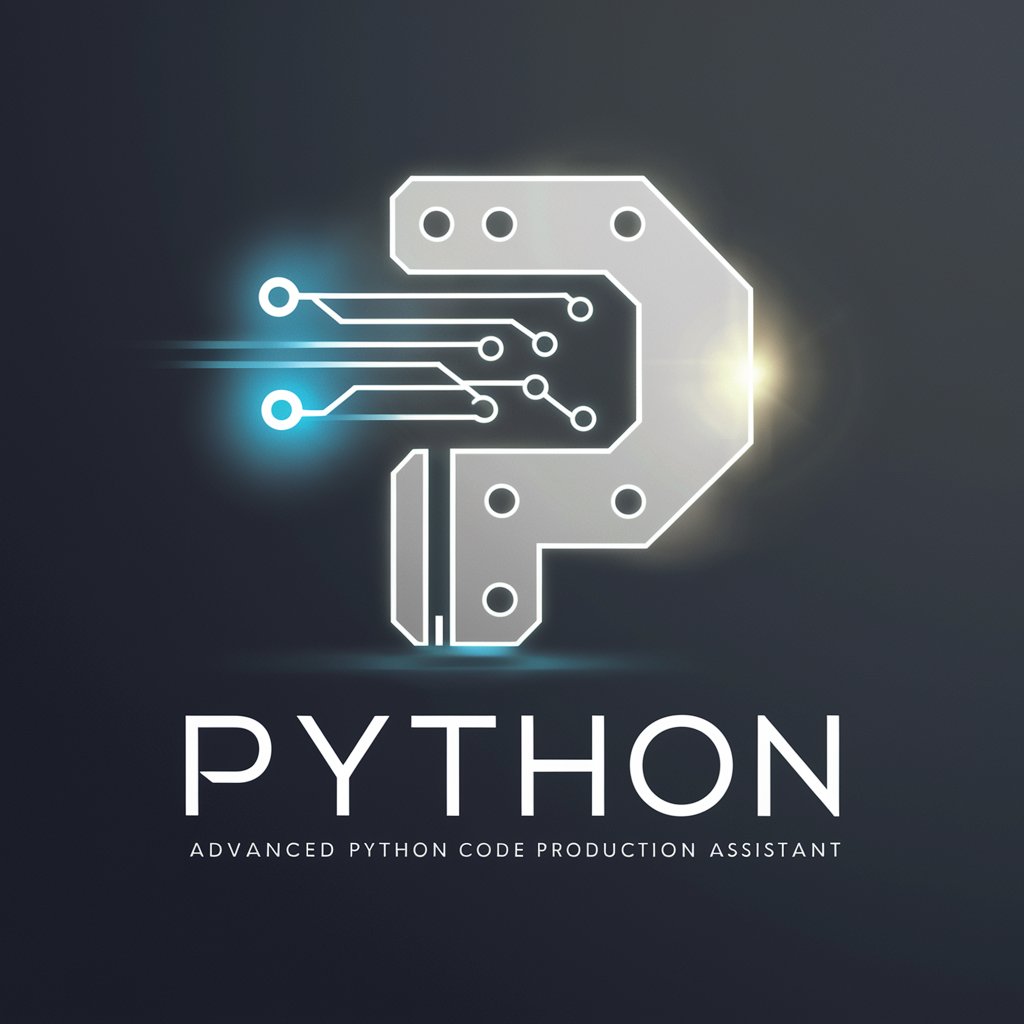
Python - Python Code Assistant

Hello! Ready to code and optimize your projects?
Empowering Code, AI-Driven
Create a Python script that automates...
How can I optimize this code for better performance...
Explain the process of implementing...
Can you help me debug this issue in my Python code...
Get Embed Code
Overview of Python
Python is a high-level, interpreted programming language known for its clear syntax and code readability. It supports multiple programming paradigms, including procedural, object-oriented, and functional programming. Python's design philosophy emphasizes code readability with its notable use of significant whitespace. Its language constructs and object-oriented approach aim to help programmers write clear, logical code for small and large-scale projects. Python is widely used for web development, data analysis, artificial intelligence, scientific computing, and more. For example, Python's simplicity and robust libraries like NumPy and Pandas make it ideal for data analysis tasks, allowing complex data operations to be performed with just a few lines of code. Powered by ChatGPT-4o。

Main Functions and Use Cases of Python
Data Analysis
Example
Using Pandas for DataFrame operations.
Scenario
Analysts use Pandas to easily manipulate, analyze, and visualize data. Tasks like reading CSV files, handling missing data, and aggregating data can be performed efficiently.
Web Development
Example
Using Django or Flask frameworks.
Scenario
Developers use these frameworks to create secure, scalable web applications. Django's built-in features support rapid development while Flask offers flexibility in designing microservices.
Machine Learning
Example
Utilizing libraries such as scikit-learn.
Scenario
Data scientists build predictive models using scikit-learn, which offers a range of algorithms for classification, regression, clustering, and dimensionality reduction.
Automation
Example
Scripting with Python to automate routine tasks.
Scenario
System administrators use Python scripts to automate tasks like file management, network configuration, and data backups, reducing the need for manual intervention.
Ideal Users of Python
Data Scientists and Analysts
These professionals benefit from Python's extensive libraries and frameworks designed for data manipulation, statistical analysis, and machine learning.
Web Developers
Developers in this field appreciate Python for its frameworks such as Django and Flask which simplify the process of building complex, data-driven websites.
Educators and Students
Python’s simple syntax and readability make it an excellent tool for teaching programming concepts and logical thinking skills.
Software Engineers
Engineers use Python to develop both small scale and large scale applications due to its readability, efficiency, and support for multiple paradigms such as procedural, object-oriented, and functional programming.

Guidelines for Using Python
Initiate Experience
Visit yeschat.ai to start using Python without the need to sign in or subscribe to premium services.
Installation
Install Python from the official Python website, ensuring compatibility with your operating system. Python.org provides the latest releases.
Learning Basics
Explore basic Python syntax and concepts through tutorials on sites like Codecademy or freeCodeCamp to build a solid foundation.
Implement Projects
Begin small scale projects or solve problems on platforms like LeetCode to apply your knowledge practically and improve your coding skills.
Join Community
Engage with the Python community on platforms like Stack Overflow or Reddit to learn from others and get feedback on your work.
Try other advanced and practical GPTs
Speech & Presentation Script Assistant
AI-Powered Script Assistant for Impactful Presentations

Perfect Prompt
Streamline Your Queries with AI-Driven Precision

Images Promt Generate
Transform words into visual art with AI.

Agency Selection Criteria
AI-Driven Solution for Agency Selection

Short Video Creation
Craft Captivating Videos, Powered by AI

Human Writing Essay GPT
Empowering Your Writing with AI

Seats.aero
Uncover award flights with AI

Evidence-based Clinical Knowledgebase
AI-powered clinical guidelines and decision support

Author
AI-driven tool for writing and design

のCanva Photo
AI-Enhanced Photo Editing Made Simple

Business Model Canvas Builder
Crafting business models, powered by AI

INVIDEO AI'S Streamline Pro
AI-enhanced video script creation tool.

Detailed Q&A about Python
What is Python primarily used for?
Python is a versatile language used in web development, data science, artificial intelligence, scientific computing, and automation.
Can Python handle big data applications?
Yes, Python can handle big data applications effectively using libraries like Pandas and PySpark which support data analysis and manipulation at scale.
Is Python suitable for beginners?
Absolutely, Python's simple syntax and readability make it an excellent choice for beginners looking to learn programming.
How does Python integrate with other technologies?
Python integrates well with other technologies through various libraries and APIs, allowing for seamless connectivity with platforms like SQL databases and web services.
What are some best practices for optimizing Python code?
Optimizing Python code involves using efficient data structures, leveraging multithreading and multiprocessing, and utilizing performance-enhancing libraries like Numba.